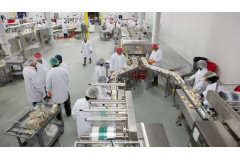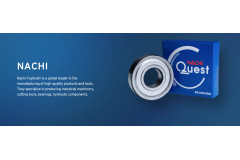Everything You Need to Know About Silicone Simmerrings
Introduction
Silicone Simmerrings, commonly used in various industries, are essential components that provide sealing solutions for rotating shafts. They are known for their durability, resistance to extreme temperatures, and flexibility, making them ideal for demanding applications. In this blog, we will explore the technical aspects, applications, materials used, and common issues associated with silicone Simmerrings.
Technical Overview of Silicone Simmerrings
1. Material Composition Silicone Simmerrings are made from silicone elastomers, which are synthetic materials known for their high-performance characteristics. Silicone provides excellent flexibility, temperature resistance, and chemical stability. This makes silicone Simmerrings suitable for use in environments where traditional rubber seals might fail.
2. Design Features
- Temperature Resistance: Silicone Simmerrings can typically withstand temperatures ranging from -60°C to +200°C, making them suitable for both low and high-temperature applications.
- Chemical Resistance: These seals are resistant to a wide range of chemicals, including oils, solvents, and fuels, though they may not be suitable for all aggressive chemicals.
- Compression Set: Silicone materials have a low compression set, meaning they can maintain their sealing capabilities over time without deforming.
Applications of Silicone Simmerrings
Silicone Simmerrings find applications in various industries, including:
- Automotive Industry: Used in engines, gearboxes, and pumps to prevent leaks and protect against contaminants.
- Aerospace Industry: Ideal for use in aircraft components where durability and temperature resistance are critical.
- Industrial Machinery: Applied in compressors, conveyors, and other machinery that require reliable sealing under varying operational conditions.
- Medical Equipment: Silicone seals are used in medical devices where hygiene and chemical resistance are paramount.
Common Problems with Silicone Simmerrings
While silicone Simmerrings offer numerous benefits, they can also face specific challenges:
1. Chemical Compatibility: Silicone is generally resistant to many substances, but some strong acids and bases can degrade silicone materials. It is crucial to verify the compatibility of silicone seals with the chemicals they will encounter.
2. UV and Ozone Degradation: Silicone can degrade when exposed to UV light and ozone over extended periods, which can lead to a loss of sealing performance. For outdoor applications, consider using UV-resistant compounds or coatings.
3. Installation Issues: Improper installation can lead to premature failure. It is essential to ensure proper alignment and use appropriate installation techniques to avoid damaging the seal during the process.
4. Temperature Limitations: Although silicone Simmerrings can withstand high temperatures, exceeding the manufacturer's specified limits can lead to seal degradation and failure. Monitoring operating conditions is crucial.
Conclusion
Silicone Simmerrings are versatile and durable sealing solutions that play a vital role in various industries. By understanding their technical specifications, applications, and potential challenges, users can make informed decisions when selecting sealing solutions for their specific needs.
For more information and to explore our range of silicone Simmerrings, visit simmering.pl.
Comments (
Related Posts:
All Post




Leave a Reply Cancel Reply